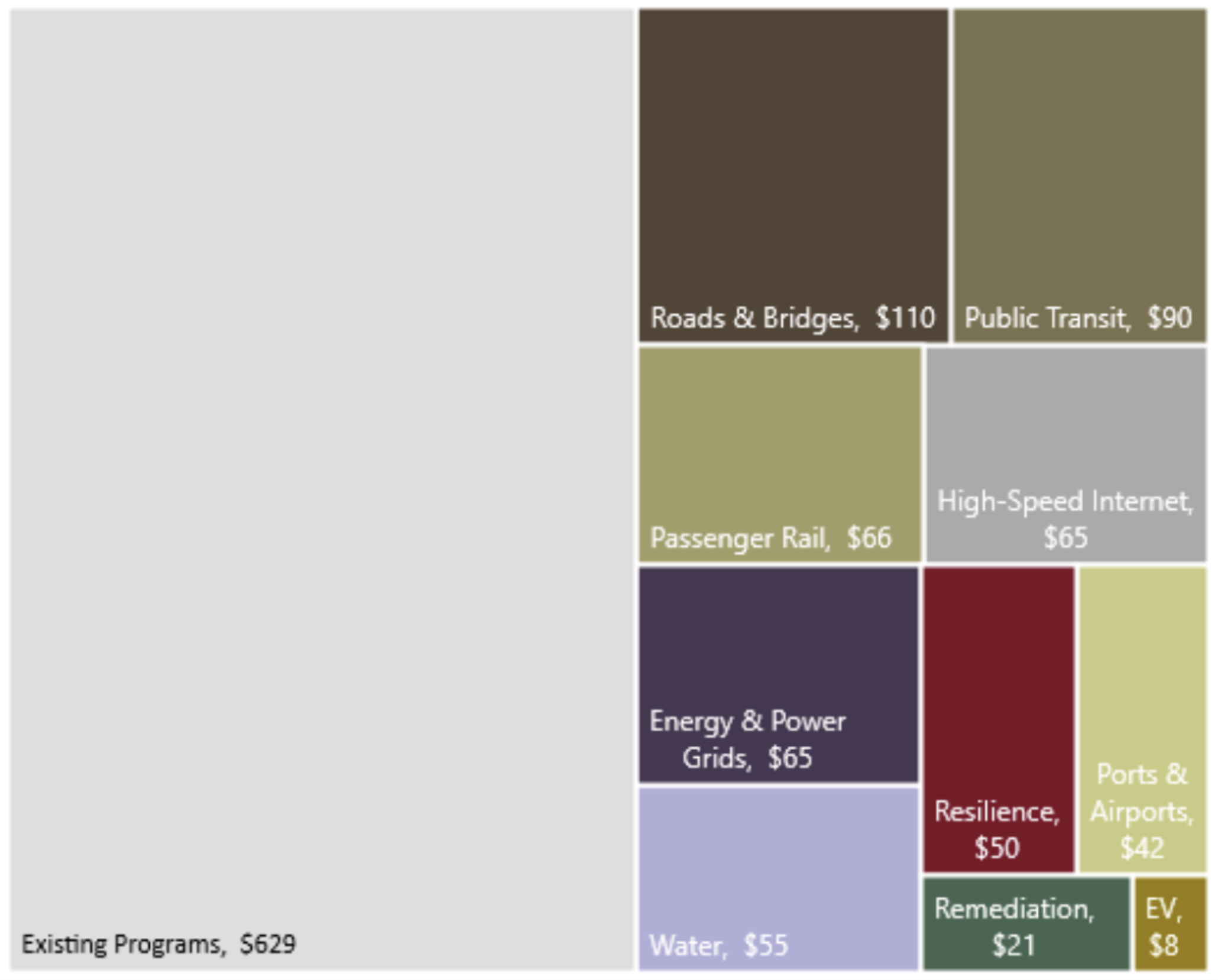We are excited to announce the promotion of Hannah Atkinson to Director of Performance. Since…

What is Infrastructure?
By Jake Meese, Managing Director
In November, Congress passed, and President Biden signed into law the Infrastructure Investments and Jobs Act. For months leading up to passage of the bill there was significant debate over a seemingly simple question: “What is Infrastructure?” Members of congress jousted over the definition, going back and forth over what was termed traditional infrastructure versus human or social infrastructure. Ultimately, a bipartisan infrastructure deal was passed creating $1.2 Trillion in funding for traditional infrastructure including over $550 Billion in new spending on clean water, high-speed internet, roads and bridges, public transportation, ports and airports, rail, electric vehicle charging stations, energy & power grids, climate change and cybersecurity resilience, and legacy pollution remediation.

The challenge of clearly defining infrastructure is not limited to the political arena. In Cardinal’s experience the question “What is Infrastructure?” is not new. Rather, it is something the investment community has been asking for many years. When introducing an asset class to an institutional investor, ambiguity is not ideal, so it is important to clearly define investment opportunities. Infrastructure investing is far reaching and sometimes acts as a catch-all for all types of nuanced investments, from global transport to Master Limited Partnerships (MLPs), making it a challenge to get investors comfortable with the asset class. Education often begins with some historical perspective.
Private market investing in infrastructure began primarily in Australia as way to provide additional capital to fund the infrastructure assets needed to sustain economic activity. In subsequent decades, as capital needs have continued to grow and bank led financing declined post financial crisis, most geographic regions began subsidizing government spending on infrastructure with private capital. This growth in private capital funding for infrastructure has been particularly significant in Europe and North America. Estimates for the required capital for ongoing infrastructure needs in the U.S. alone are well more than $1.0 trillion a year, creating opportunity for investors to fill the funding gap through direct investment and Public Private Partnerships (PPP).
Cardinal considers Infrastructure as one component of the larger Real Assets category. Our definition of Infrastructure is an investment in tangible assets, typically a combination of land and structures that constitute real property, which offer the services and facilities necessary for an economy to function. These assets fall into several different market segments, but in general they typically share similar characteristics:
 Traditional sectors of Infrastructure assets include:
Traditional sectors of Infrastructure assets include:
- Transportation (Ports, Rail, Airports, Toll Roads, Bridges),
- Energy and Utilities (Water, Electricity, Waste Management, Oil & Natural Gas Pipelines, Renewables)
- Communications and Data (Cell Phone Towers, Data Centers, Fiberoptic Cable)
This basic definition helps investors understand the types of assets available across the infrastructure landscape; however, there are still many considerations to be aware of before committing to an investment. Infrastructure investing can be equity or debt, accessed via private markets (closed or open-ended funds) or public markets (listed infrastructure funds or municipal bonds). Investment strategies can be diversified and broad or can explore a specific segment of the market, such as energy transition. The wide range of investment opportunities and implementation options come with different expected return and risk profiles, each dependent on several additional factors such as geographic exposure, GDP sensitivity, asset maturity, brownfield vs greenfield, liquidity, leverage, etc.
The Infrastructure Investment and Jobs Act passed in November will certainly provide some much-needed capital to the nation’s infrastructure, but it will likely have little impact on the market dynamics of global infrastructure investing. Global opportunities for private investors in infrastructure are growing. Investment opportunities across Infrastructure offer long-term stable assets, attractive yield, potential for inflation hedging, and diversification benefits to traditional asset classes. If these characteristics are appealing, the first step to an allocation is getting comfortable with what infrastructure is and the nuances of the different implementation options.
Cardinal Investment Advisors is a 100% employee-owned, independent firm focused solely on institutional investment consulting. After 20 years, this remains their sole line of business. Cardinal’s mission is to serve institutional investors with unique liability streams by developing, implementing and sustaining customized investment strategies that best enable their clients to fulfill their investment and operating goals in an independent and conflict-free manner.
Interested in learning more? Contact Cardinal Investment Advisors here.



